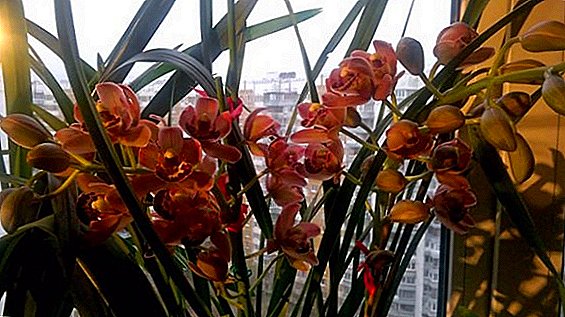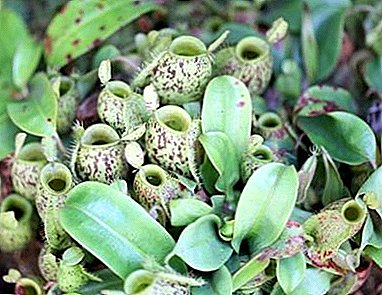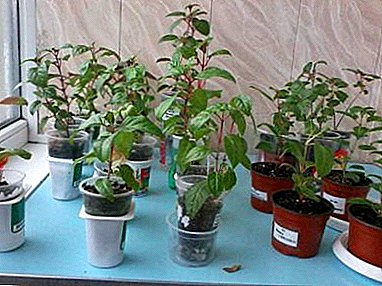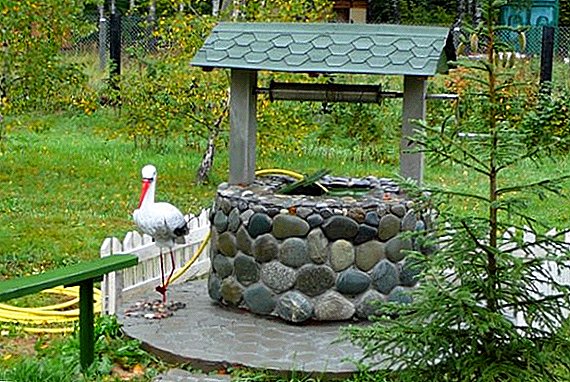 Sooner or later, the owners of dachas, who are not fortunate enough to have a centralized water supply, think about the question of finding a source of water. In this case, the only option is the underground horizons. In order to decide which of the water extraction methods to choose - a well or a well, one should find out the advantages and disadvantages of each of them.
Sooner or later, the owners of dachas, who are not fortunate enough to have a centralized water supply, think about the question of finding a source of water. In this case, the only option is the underground horizons. In order to decide which of the water extraction methods to choose - a well or a well, one should find out the advantages and disadvantages of each of them.
Well and well: the differences
Let's consider the cost, complexity of maintenance and ease of use of the well and well, as well as the service life and water quality should be counted in both cases.

Price
Due to the absence of the need for drilling and the use of heavy equipment, the construction of the well will cost a lot less. And even if you pump the water from the well not manually, but with a pump, its cost does not compare with the price of the well equipment.

The cost of the well depends on its depth and, accordingly, the required number of rings. Today, one concrete ring is on average 2 thousand rubles, and its digging in heavy clay soil is about 15 thousand rubles. For example, for a well with a depth of 12 meters you need 15 rings. Thus, this well "turnkey" will cost about 65-70 thousand rubles.
The cost of setting up a well depends primarily on the depth of drilling. It also reflects the time of year and the equipment used. Do not forget about the cost of buying casing, tip and pump.
Learn more about landscape design, handicrafts and garden sculptures, namely, read how to make a flower garden from wheel tires or stones, wattle, gabions, rock arias, ladybugs, fencing for beds.
Typically, the cost of drilling one meter of a well, performed by drilling experts, starts from 1.8 thousand rubles with steel pipes of 4.5 millimeters thick and threaded together. And it remains constant regardless of the required depth.

In addition, the well should be equipped with a pump, which will have to pay from 30 thousand rubles. Then the total price of the well will start from the sum of 100 thousand rubles. To use water for drinking purposes, the well must be equipped with a filtration system, the price of which will be 50-250 thousand rubles.
Did you know? Although 70% of the Earth’s surface is covered with water, only 1% of it is fresh. The problem of lack of resources is exacerbated every year. Over the past fifty years in the world recorded more than 500 conflicts related to access to drinking water, and 21 of them ended in hostilities.
The convenience of use
Well - The oldest method of extracting water from underground sources. It is extremely versatile and performs its functions even in the absence of electricity, in this case, water can be obtained with an ordinary bucket.

However, the well has a limited supply of fluid, an average of 150-250 liters per hour. Therefore, if you need to maintain a large area, especially with a large number of green spaces or a swimming pool, this number may not be enough. In addition, a shallow well dug on top of a water pipe depends entirely on precipitation and may become shallow in dry weather.
The artesian layers have a practically inexhaustible supply, and you will not be limited to watering or other economic needs. But when you turn off the electricity to get liquid from the column will be impossible. Therefore, in order not to be in a similar situation, an autonomous generator of electricity or a storage capacity should be provided for, which naturally will lead to even greater material costs.
Difficulties of leaving
The well should be used regularly, otherwise in 3-4 years it will begin to silt. In addition, it should be cleaned and washed at least twice a year, and if necessary, also treated with disinfectants.

There is no need to clean the well; there is a filter for this.. Caring for her is only to monitor the correct operation of the equipment.
For arranging the interior of the cottage, we recommend learning how to install a light switch, do it yourself and install a running water heater, as well as remove old paint and whitewash, whiten the ceiling and glue the wallpaper, how to make a plasterboard partition with a doorway or plasterboard walls.
Water quality
Unlike a column, well water will not have a rusty taste. However, the ecological state of the surrounding area may affect its quality. Usually the depth of the aquifer is from 5 to 25 meters. This is not so much, so it can fall precipitation, wastewater from nearby enterprises or chemical fertilizers from farms.

The water from the well is of better quality, since it is extracted from the deep horizons. Spring water has always been valued for its purity and benefit; it contains almost no nitrates and salts of harmful metals. And thanks to the closed mouth of the well, leaves, insects, frogs or some kind of garbage do not get into it. However, this water may have a metallic or rusty aftertaste.
Important! Consider that groundwater is actually technical. And to bring them to the drinking quality, further purification is necessary, for example, with a filtration system.
Life time
Properly arranged well will regularly perform its functions 30-50 years. The pledge of his long work - care and timely cleaning.

A well-arranged well will also serve a satisfied long time — at least 25 years, depending on the equipment chosen, maintenance, operating conditions and chemical composition of the fluid and soil. Artesian wells have a higher durability - up to 50 years.
Types of wells: their pros and cons
There are two types of wells, depending on the depth of groundwater.:
- mine;
- Abyssinian.
Learn how to choose a pumping station to give, conduct water in the house and install a flow-through water heater.
Mine
If underground waters are not located deeply and there is no need for their large volumes, it is enough to manually dig out a pit, strengthen its walls and arrange a cap. In this case, you get a device of the mine type, also known to our ancestors. And modern building materials will make it more reliable and durable.

Such a well picks up fluid in the near-constant aquifer. In most cases, the well is digging by hand, then the earth is taken out, and the walls of the mine are reinforced with concrete rings, finishing material (stone, brick) or wood (larch, pine, oak).
When digging a well, it is buried in a solid layer below the aquifer. The liquid rises manually or by an electric pump. It gradually flows from the horizons and accumulates in the well in a certain amount. If you select all the water from the well, the new one will arrive only after a while.
The advantages of the mine well:
- relatively low complexity and price;
- work in the absence of electricity;
- easy care due to large diameter;
- ease of operation.

Disadvantages:
- limited supply of fluid;
- the likelihood of water pollution;
- the need to clean the walls and bottom;
- the likelihood of devastation of the well in the heat.
Abyssinian
Such a well suit, when there is no need for a powerful well. Its second name is the borehole needle. It does not need heavy machinery or large earthworks, it is dug by hand drilling or with the help of compact equipment.

The device of such a well is to install a pipe of small cross section (up to 4 cm) to the depth of the upper aquifer. For better immersion of the pipe in the ground, it is equipped with a conical tip with a diameter of 4-5 cm larger than the diameter of the pipe itself. In this case, the lower part of the pipe is equipped with a filter that protects against pollution. The liquid is supplied to the surface by a self-priming pump.
To preserve heat in your home, we advise you to learn how to warm the window frames for the winter and choose a heating stove.
The maximum depth of the Abyssinian well is 12-13 meters. Such a well can be mounted in any convenient place, avoiding the proximity of sewers or drainage collectors. Also in the place of water intake should not meet the clay, so as not to clog the filter. It should be noted that the well needle should be preserved for the winter: dismantle the pump, drain the water, put a plug on the well.

Advantages:
- more water than in a shaft well;
- simplicity of design;
- relatively low costs;
- cleaner water than a normal well.
Disadvantages:
- does not work without electricity;
- need to preserve for the winter.
Did you know? Studies have shown that water reduces the potential danger of a heart attack. It was found that people who drank six glasses of clean water a day are less likely to have a heart stroke than those who drank only two glasses.
Types of wells with their pros and cons
There are two main types of wells - sand and artesian. Let's look at how they differ and what advantages and disadvantages each of these species has.
Sand (filter)
The peculiarity of such a well is that it is performed in sandy soil. Its depth can reach up to 30 meters, and the maximum lifetime is 15 years. Although practice shows that on average this indicator is about 7 years, which is one of the drawbacks of this type of well.

Another drawback is the limited supply of liquid - about 500 liters per hour and its not very high quality due to precipitation in aquifer sands. However, they do not get the dirtiest water pipe, so the water will be slightly better in quality than from the well. In addition, to avoid silting, it should be used regularly.
However, if we compare it with the artesian one, then the advantages include: lower cost, use of small-sized equipment, short construction time and low iron content.
Artesian
Pipe or artesian are called mines with a depth of over 20 meters, which take water from the artesian layer, which is located between the two waterproof layers. Such work is done only with the help of heavy machinery, and sometimes the depth of drilling can reach 200 meters. An artesian well produces an average of 2 cubic meters of fluid per hour and under favorable conditions can last up to 50 years.

The well itself consists of plastic or metal casing, caisson, pumping equipment and automation systems. All work on its construction and connection should be performed only by specialists.
It will be useful for owners of country houses, summer cottages, as well as residents of the private sector in cities how to make a path from wood cuts, concrete paths, build a formwork for the foundation of the fence, make a fence from gabions, fence from a chain-link grid, and also how to build a verandah , pool, toilet do it yourself.
Artesian water usually has very good quality due to reliable protection from surface contamination. It can fully meet all the needs of a private house. However, before drinking water for drinking purposes, it is necessary to make its chemical analysis and, depending on its results, install a purification system.

Pros:
- high performance;
- good water quality;
- durability of the structure;
- irregular use is allowed.
- high cost of work and equipment;
- high water salinity;
- the inability to work without electricity;
- inability to clean in case of silting.
Important! Even the simplest well of a mine type is better not to dig yourself, but to invite experts. Because there is a risk of bumping into the so-called "float", which can lead to tragedy.
How to make a choice: summarize
In order to determine the method of water extraction in the country, you need to analyze several factors:

- ground water level;
- the amount of water required in the household;
- material opportunities;
- the ability to install pumping equipment.
Reviews from the Internet














